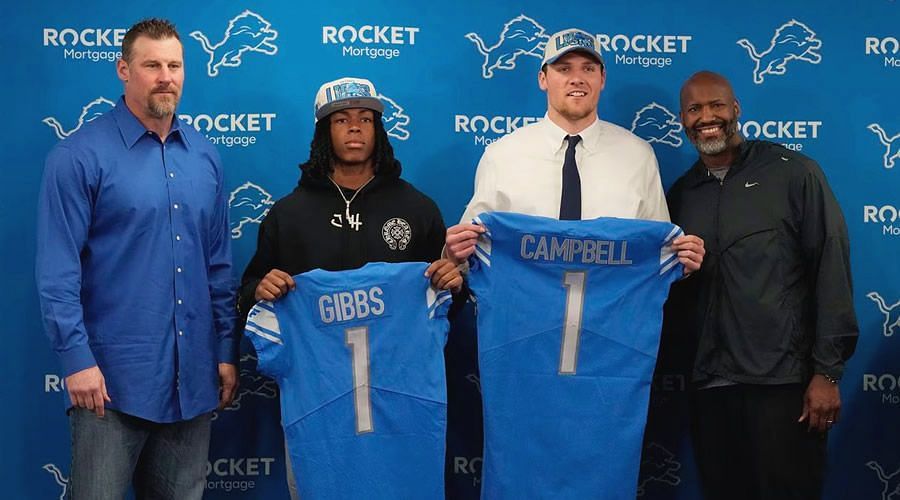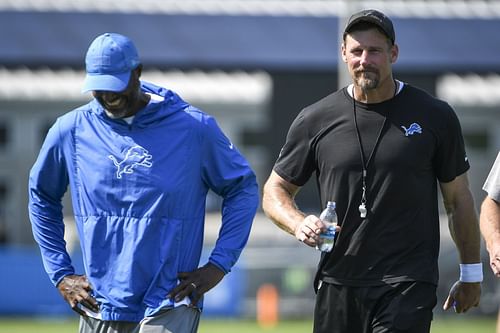
Biggest losers from the 2023 NFL Draft
The 2023 NFL Draft is in the books and it’s time to break down everything that happened over the weekend. Obviously, everybody got better by adding young talent, but some teams used their draft capital better than others – whether that’s just the players they picked or their overall strategy.
In this article, I will lay out my five biggest losers from the weekend. This could be a specific team that did really well in terms of how they used their assets, individual prospects, position groups or NFL veterans, due to how they will be affected.

Brad Holmes believers (in the analytics community)
I just talked about the Cardinals kind of fleecing the Lions in a couple of trades during the draft and mentioned that they sent a veteran running back to Philly at some point, so let’s just continue with them here.
They've got some really good football players – don’t get me wrong here. However, the way they approached the weekend in terms of when and where they moved, how they tried to maximize value and the overall strategy, I would certainly question.
Since I just said that the Cardinals might have gotten a little bit lucky with the Texans being hell-bent on picking two and three in order to get their cornerstone pieces on either side of the ball, let me take some heat off Brad Holmes and the rest of the Lions brass.
I’m pretty sure they did not expect the Seahawks to take what was probably the guy they targeted all along in Illinois’ Devon Witherspoon. He was a minus-favorite to go sixth overall in terms of betting odds at the start of the calendar week already and I think throughout the process I may have seen two mock drafts that lined Seattle to him.
With that being said when the Cardinals called – and I obviously don’t know if that was the only team interested – they barely gained surplus based on draft value charts by moving back six spots to 12 (in exchange for 34 and 168, whilst getting back pick 81) and drafted the number two running back Jahmyr Gibbs from Alabama.
I absolutely love him and probably had him as high as anybody at 17th overall on my big board, but even for me, that is pretty rich. More importantly, they could have had people who are legitimately considered generational prospects like Texas’ Bijan Robinson if they just stuck at six.
The result of picking a running back there was them ultimately trading away a high second-rounder from a couple of years ago with a very similar skill-set in D’Andre Swift for a 2025 fourth-rounder by the Eagles.
With their other first-round pick (18th) overall, they selected Iowa linebacker Jack Campbell, who was my LB1 and is wrongly portrayed as just this inside thumper. I really like the player, but once again – it’s too high for me and more importantly, even if you see a major drop-off after him, the next legit off-ball linebacker to come off the board was Arkansas’ Drew Sanders early in the third round – and he actually has legit rush upside.
Then after targeting the two lowest-value positions, I did like Iowa tight-end Sam LaPorta (34th overall) and Alabama nickelback/safety Brian Branch (45th) in the second round, which I think do make a lot of sense. I’ve heard people saying that if you switched some of those names, that’s actually a solid group, which I agree with – but that’s not how this thing works!
I get the Hendon Hooker pick (68th) in the third, even though I would have felt much better if they had made sure to get Will Levis at the top of the second, since that would seem like more of a clear direction for them, but then what really annoyed me is them picks 122, 139 and 168 for a selection just inside the top-100 that was used on a developmental nose-tackle in Western Kentucky’s Brodric Martin, who based on my and consensus rankings was a seventh-round prospect.
That’s just a poor understanding of the board and allocation of resources all around and I think all the analytics services will end up grading their class extremely low.